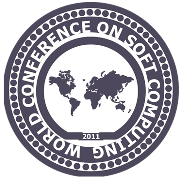Keynote Speakers
Lotfi A. Zadeh
TITLE: Stratification, target set reachability and incremental enlargement principle
This talk presents a brief exposition of a version of the concept of stratification, call it CST for short. In our approach to stratification, CST is a computational system in which the objects of computation are strata of data. Usually, the strata are nested or stacked with nested strata centering on a target set, T. CST has a potential for significant applications in planning, robotics, optimal control, pursuit, multiobjective optimization, exploration, search and other fields. Very simple, familiar examples of stratification are dictionaries, directories and catalogues. A multi-layer perceptron may be viewed as a system with a stratified structure. In spirit, CST has similarity to dynamic programming (DP), but it is much easier to understand and much easier to implement. An interesting question which relates to neuroscience is: Does the human brain employ stratification to store information? It would be natural to represent a concept such as chair, as a collection of strata with one or more strata representing a type of chair. Underlining our approach is a model, call it FSM. FSM is a discrete-time, discrete-state dynamical system which has a finite number of states. The importance of FSM as a model derives from the fact that through the use of granulation and/or quantization almost any kind of system can be approximated to by a finite state system. A concept which plays an important role in our approach is that of target set reachability. Reachability involves moving (transitioning) FSM from a state w to a state in target state, T, in a minimum number of steps. To this end, the state space, W, is stratified through the use of what is refer as the incremental enlargement principle. It should also be noted that the concept reachability is related to the concept of accessibility in modal logic.
DATE: May 23rd, 2016
Lotfi A. Zadeh
is Professor Emeritus in the Computer Science Division, Department of EECS, University of California, Berkeley. In addition, he is serving as the Director of BISC (Berkeley Initiative in Soft Computing).
Lotfi Zadeh is an alumnus of the University of Tehran, MIT and Columbia University. From 1950 to 1959, Lotfi Zadeh was a member of the Department of Electrical Engineering, Columbia University. He joined the Department of Electrical Engineering at UC Berkeley in 1959 and served as its Chair from 1963 to 1968. During his tenure as Chair, he played a key role in changing the name of the Department from EE to EECS.
Lotfi Zadeh held visiting appointments at the Institute for Advanced Study, Princeton, NJ; MIT, Cambridge, MA; IBM Research Laboratory, San Jose, CA; AI Center, SRI International, Menlo Park, CA; and the Center for the Study of Language and Information, Stanford University.
Lotfi Zadeh is a Fellow of the IEEE, AAAS, ACM, AAAI, and IFSA. He is a member of the National Academy of Engineering and a Foreign Member of the Finnish Academy of Sciences, the Polish Academy of Sciences, Korean Academy of Science & Technology, Bulgarian Academy of Sciences, the International Academy of Systems Studies and the Azerbaijan National Academy of Sciences. He is a recipient of the IEEE Education Medal, the IEEE Richard W. Hamming Medal, the IEEE Medal of Honor, the ASME Rufus Oldenburger Medal, the B. Bolzano Medal of the Czech Academy of Sciences, the Kampe de Feriet Medal, the AACC Richard E. Bellman Control Heritage Award, the Grigore Moisil Prize, the Honda Prize, the Okawa Prize, the AIM Information Science Award, the IEEE-SMC J. P. Wohl Career Achievement Award, the SOFT Scientific Contribution Memorial Award of the Japan Society for Fuzzy Theory, the IEEE Millennium Medal, the ACM 2001 Allen Newell Award, the Norbert Wiener Award of the IEEE Systems, Man and Cybernetics Society, Civitate Honoris Causa by Budapest Tech (BT) Polytechnical Institution, Budapest, Hungary, the V. Kaufmann Prize, International Association for Fuzzy-Set Management and Economy (SIGEF), the Nicolaus Copernicus Medal of the Polish Academy of Sciences, the J. Keith Brimacombe IPMM Award, the Silicon Valley Engineering Hall of Fame, the Heinz Nixdorf MuseumsForum Wall of Fame, the Egleston Medal, the Franklin Institute Medal, the Medal of the Foundation by the Trust of the Foundation for the Advancement of Soft Computing, the High State Award ‘Friendship Order’, from the President of the Republic of Azerbaijan, the Transdisciplinary Award and Medal of the Society for Design and Process Sciences, other awards and twenty-five honorary doctorates. In 2011, Lotfi Zadeh was inducted into the AI Hall of Fame. In 2012, received the PAAIA Lifetime Achievement Award. In 2013, Lotfi Zadeh received the BBVA Foundation Frontiers of Knowledge Award for the invention and development of fuzzy logic.
Lotfi Zadeh is known as the inventor of fuzzy logic. His first paper, Fuzzy Sets, 1965, is the highest cited paper in Computer Science (Web of Science) and the seventh highest cited paper in Science (Web of Science). He has published extensively (over 240 single-authored papers) on a wide variety of subjects relating to the conception, design and analysis of information/intelligent systems, and is serving on the editorial boards of over seventy journals.
Prior to the publication of his first paper on fuzzy sets in 1965, Lotfi Zadeh’s work was concerned in the main with systems analysis, decision analysis and information systems. His current research is focused on fuzzy logic, semantics of natural languages, computational theory of perceptions, computing with words, extended fuzzy logic and Z-numbers.
To the top
TITLE: Issues in Multi-Criteria Decision Making
Multi-Criteria decision-making is a pervasive problem appearing in many technological domains. During this presentation we shall discuss some issue related to this task. One issue is on the evaluation of multi-criteria decision functions in the face of uncertain information. We shall look at different methods for formulating multi-criteria decision functions to enable the modeling of sophisticated complex relationships between the criteria.
DATE: May 23rd, 2016
Ronald R. Yager is Director of the Machine Intelligence Institute and Professor of Information Systems at Iona College. He is editor and chief of the International Journal of Intelligent Systems. He has published over 500 papers and fifteen books in areas related to fuzzy sets, human behavioral modeling, decision-making under uncertainty and the fusion of information. He is among the world’s top 1% most highly cited researchers with over 27000 citations. He was the recipient of the IEEE Computational Intelligence Society Pioneer award in Fuzzy Systems. He received the special honorary medal of the 50-th Anniversary of the Polish Academy of Sciences. He received the Lifetime Outstanding Achievement Award from International the Fuzzy Systems Association. He received an honorary doctorate degree, honoris causa, from the State University of Information Technologies, Sofia Bulgaria. Dr. Yager is a fellow of the IEEE, the New York Academy of Sciences and the Fuzzy Systems Association. He has served at the National Science Foundation as program director in the Information Sciences program. He was a NASA/Stanford visiting fellow and a research associate at the University of California, Berkeley. He has been a lecturer at NATO Advanced Study Institutes. He is a visiting distinguished scientist at King Saud University, Riyadh Saudi Arabia. He is a distinguished honorary professor at the Aalborg University Denmark. He received his undergraduate degree from the City College of New York and his Ph. D. from the Polytechnic University of New York.
To the top
This talk presents a brief exposition of a version of the concept of stratification, call it CST for short. In our approach to stratification, CST is a computational system in which the objects of computation are strata of data. Usually, the strata are nested or stacked with nested strata centering on a target set, T. CST has a potential for significant applications in planning, robotics, optimal control, pursuit, multiobjective optimization, exploration, search and other fields. Very simple, familiar examples of stratification are dictionaries, directories and catalogues. A multi-layer perceptron may be viewed as a system with a stratified structure. In spirit, CST has similarity to dynamic programming (DP), but it is much easier to understand and much easier to implement. An interesting question which relates to neuroscience is: Does the human brain employ stratification to store information? It would be natural to represent a concept such as chair, as a collection of strata with one or more strata representing a type of chair. Underlining our approach is a model, call it FSM. FSM is a discrete-time, discrete-state dynamical system which has a finite number of states. The importance of FSM as a model derives from the fact that through the use of granulation and/or quantization almost any kind of system can be approximated to by a finite state system. A concept which plays an important role in our approach is that of target set reachability. Reachability involves moving (transitioning) FSM from a state w to a state in target state, T, in a minimum number of steps. To this end, the state space, W, is stratified through the use of what is refer as the incremental enlargement principle. It should also be noted that the concept reachability is related to the concept of accessibility in modal logic.
DATE: May 23rd, 2016
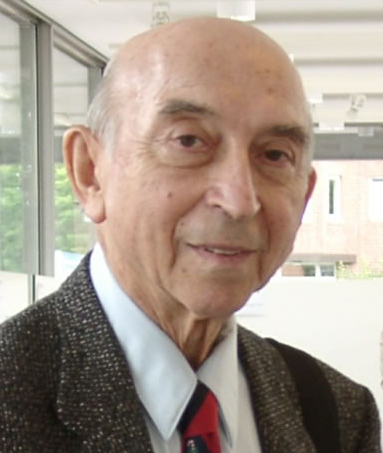 |
To the top
Ronald R. Yager
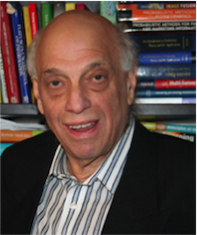 |
Multi-Criteria decision-making is a pervasive problem appearing in many technological domains. During this presentation we shall discuss some issue related to this task. One issue is on the evaluation of multi-criteria decision functions in the face of uncertain information. We shall look at different methods for formulating multi-criteria decision functions to enable the modeling of sophisticated complex relationships between the criteria.
DATE: May 23rd, 2016
Ronald R. Yager is Director of the Machine Intelligence Institute and Professor of Information Systems at Iona College. He is editor and chief of the International Journal of Intelligent Systems. He has published over 500 papers and fifteen books in areas related to fuzzy sets, human behavioral modeling, decision-making under uncertainty and the fusion of information. He is among the world’s top 1% most highly cited researchers with over 27000 citations. He was the recipient of the IEEE Computational Intelligence Society Pioneer award in Fuzzy Systems. He received the special honorary medal of the 50-th Anniversary of the Polish Academy of Sciences. He received the Lifetime Outstanding Achievement Award from International the Fuzzy Systems Association. He received an honorary doctorate degree, honoris causa, from the State University of Information Technologies, Sofia Bulgaria. Dr. Yager is a fellow of the IEEE, the New York Academy of Sciences and the Fuzzy Systems Association. He has served at the National Science Foundation as program director in the Information Sciences program. He was a NASA/Stanford visiting fellow and a research associate at the University of California, Berkeley. He has been a lecturer at NATO Advanced Study Institutes. He is a visiting distinguished scientist at King Saud University, Riyadh Saudi Arabia. He is a distinguished honorary professor at the Aalborg University Denmark. He received his undergraduate degree from the City College of New York and his Ph. D. from the Polytechnic University of New York.
To the top
Yingxu Wang
TITLE: Soft Computing: Philosophical, Mathematical, and Theoretical Foundations of Cognitive Robotics and Computational Intelligence
The 2016 World Conference on Soft Computing is dedicated to Prof. Lotfi A. Zadeh’s seminal work on fuzzy sets, fuzzy logic, and fuzzy inference methodologies for 50 years as well as his 95th birthday. Dr. Zadeh is one of the greatest minds in contemporary philosophy, mathematics, computer science, intelligence science, and engineering applications. In his vision, “Soft computing is a consortium of methodologies which play an important role in the conception, design and utilization of intelligent systems.” He has identified that “The principal methodologies in soft computing are: fuzzy logic, neurocomputing, evolutionary computing, cyber computing, probability computing, and machine learning.” This keynote lecture attempts to highlight Dr. Zadeh’s philosophical, mathematical, and theoretical thoughts on soft computing. It demonstrates that soft computing is an indispensable methodology to the emerging fields of cognitive computing and cognitive robotics in cognitive informatics and computational intelligence. Latest advances in the framework of denotational mathematics inspired by Dr. Zadeh such as fuzzy truth algebra, fuzzy probability theory, fuzzy concept algebra, fuzzy semantic algebra, and fuzzy inference algebra [Wang, 2000-2016], as well as applications in soft computing are briefly presented. This talk also intends to express that the key principle we learnt from Dr. Zadeh is that a proven theory of soft computing may lead to a systematic solution to a wide range of real-world problems, so as Immanuel Kant (1724-1804) asserted: “There is nothing more practical than a good theory.”
DATE: May 23rd, 2016
Yingxu Wang
is professor of cognitive informatics, brain science, software science, and denotational mathematics. He is President of International Institute of Cognitive Informatics and Cognitive Computing (ICIC, http://www.ucalgary.ca/icic/). He is a Fellow of ICIC, a Fellow of WIF (UK), a P.Eng of Canada, and a Senior Member of IEEE and ACM. He is/was visiting professor (on sabbatical leave) at Oxford University (1995), Stanford University (2008 | 2016), UC Berkeley (2008), and MIT (2012), respectively. He received a PhD in Computer Science from the Nottingham Trent University in 1998 and has been a full professor science 1994. He is the founder and steering committee chair of the annual IEEE International Conference on Cognitive Informatics and Cognitive Computing (ICCI*CC) since 2002. He is founding Editor-in-Chief of Int’l Journal of Cognitive Informatics & Natural Intelligence, founding Editor-in-Chief of Int’l Journal of Software Science & Computational Intelligence, Associate Editor of IEEE Trans. on SMC - Systems, Editor-in-Chief of Journal of Advanced Mathematics & Applications, and Editor-in-Chief of Journal of Mathematical & Computational Methods. Dr. Wang is the initiator of a few cutting-edge research fields such as cognitive informatics, denotational mathematics (concept algebra, process algebra, system algebra, semantic algebra, inference algebra, big data algebra, fuzzy truth algebra, fuzzy probability algebra, fuzzy semantic algebra, visual semantic algebra, and granular algebra), abstract intelligence (αI), the neural circuit theory, mathematical models of the brain, cognitive computing, cognitive learning engines, cognitive knowledge base theory, and basic studies across contemporary disciplines of intelligence science, robotics, knowledge science, computer science, information science, brain science, system science, software science, data science, neuroinformatics, cognitive linguistics, and computational intelligence. He has published 400+ peer reviewed papers and 29 books in aforementioned transdisciplinary fields. He has presented 30 invited keynote speeches in international conferences. He has served as general chairs or program chairs for more than 20 international conferences. He is the recipient of dozens international awards on academic leadership, outstanding contributions, best papers, and teaching in the last three decades. He is one of the top 2.5% scholars worldwide according to the big data system of Research Gate international stats.
The 2016 World Conference on Soft Computing is dedicated to Prof. Lotfi A. Zadeh’s seminal work on fuzzy sets, fuzzy logic, and fuzzy inference methodologies for 50 years as well as his 95th birthday. Dr. Zadeh is one of the greatest minds in contemporary philosophy, mathematics, computer science, intelligence science, and engineering applications. In his vision, “Soft computing is a consortium of methodologies which play an important role in the conception, design and utilization of intelligent systems.” He has identified that “The principal methodologies in soft computing are: fuzzy logic, neurocomputing, evolutionary computing, cyber computing, probability computing, and machine learning.” This keynote lecture attempts to highlight Dr. Zadeh’s philosophical, mathematical, and theoretical thoughts on soft computing. It demonstrates that soft computing is an indispensable methodology to the emerging fields of cognitive computing and cognitive robotics in cognitive informatics and computational intelligence. Latest advances in the framework of denotational mathematics inspired by Dr. Zadeh such as fuzzy truth algebra, fuzzy probability theory, fuzzy concept algebra, fuzzy semantic algebra, and fuzzy inference algebra [Wang, 2000-2016], as well as applications in soft computing are briefly presented. This talk also intends to express that the key principle we learnt from Dr. Zadeh is that a proven theory of soft computing may lead to a systematic solution to a wide range of real-world problems, so as Immanuel Kant (1724-1804) asserted: “There is nothing more practical than a good theory.”
DATE: May 23rd, 2016
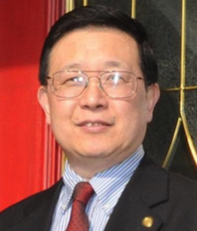 |
Jerry Mendel
TITLE: Perspectives on Type-2 fuzzy Sets and Systems
This talk will provide some interesting and novel perspectives about type-2 fuzzy sets and systems. It will also explain what to me are some of the “game-changing” technical events that have occurred in the type-2 field during the past 16+ years, and will describe future directions and challenges for the type-2 field.
DATE: May 23rd, 2016
Jerry M. Mendel
received the Ph.D. degree in electrical engineering from the Polytechnic Institute of Brooklyn, Brooklyn, NY. Currently he is Professor of Electrical Engineering at the University of Southern California in Los Angeles, where he has been since 1974. He has published over 570 technical papers and is author and/or co-author of 12 books, including Uncertain Rule-based Fuzzy Logic Systems: Introduction and New Directions (Prentice-Hall, 2001), Perceptual Computing: Aiding People in Making Subjective Judgments (Wiley & IEEE Press, 2010), and Introduction to Type-2 Fuzzy Logic Control: Theory and Application (Wiley & IEEE Press, 2014). He is a Life Fellow of the IEEE, a Distinguished Member of the IEEE Control Systems Society, and a Fellow of the International Fuzzy Systems Association. He was President of the IEEE Control Systems Society in 1986, a member of the Administrative Committee of the IEEE Computational Intelligence Society for nine years, and Chairman of its Fuzzy Systems Technical Committee and the Computing With Words Task Force of that TC. Among his awards are the 1983 Best Transactions Paper Award of the IEEE Geoscience and Remote Sensing Society, the 1992 Signal Processing Society Paper Award, the 2002 and 2014 Transactions on Fuzzy Systems Outstanding Paper Awards, a 1984 IEEE Centennial Medal, an IEEE Third Millenium Medal, and a Fuzzy Systems Pioneer Award (2008) from the IEEE Computational Intelligence Society.
To the top
This talk will provide some interesting and novel perspectives about type-2 fuzzy sets and systems. It will also explain what to me are some of the “game-changing” technical events that have occurred in the type-2 field during the past 16+ years, and will describe future directions and challenges for the type-2 field.
DATE: May 23rd, 2016
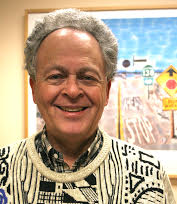 |
To the top
Hiroshi Nakajima
TITLE: Systems Intelligence in Healthcare – Changes in Lifestyle Behavior and Vitals
Due to the arrival of super aging society, the lifestyle and chronic diseases such as hypertension and diabetes have been making serious impacts on social problems in all over the world. Besides prevention and treatment of the diseases, healthcare improvement is also the center of important concerns by happiness in life. According to the social trends with the technology developments of wearable devices and ICT, data centric knowledge extraction and evidence discovery based on systems approach would play an important role in healthcare science and technology. In this talk, the idea of Systems Intelligence will be conceptually introduced. The digital healthcare system and data analysis results accumulated by the system will follow the ideas of the systems approach in healthcare. The results showed the behavioral and vital changes according to seasons and weeks and they would be the valuable information and knowledge in healthcare.
DATE: May 23rd, 2016
Hiroshi Nakajima
received the B.Eng. degree in System Engineering from Kobe University, Japan, in 1985, and Ph.D. degree in Systems Information Science from Kumamoto University, Japan, in 2004. He is currently Chief Specialist of Technology at Omron Corporation. Besides long term career at industry, he also has some academic careers such as visiting professor at Kyushu Institute of Technology. He has focused on developing the general solution for improvement of health in humans, artifacts such as machines and information, and energy consumptions by applying sensory inspection and soft computing. He received the best paper award from Interaction’99 in 1999, the best author award from Information Processing Society of Japan in 2000, the Industrial Outstanding Application Award from International Fuzzy Systems Association in 2007, the best paper award from Japan Society for Fuzzy Theory and Intelligent Informatics in 2009, and Biomedical Wellness Award from SPIE in 2011.
To the top
Due to the arrival of super aging society, the lifestyle and chronic diseases such as hypertension and diabetes have been making serious impacts on social problems in all over the world. Besides prevention and treatment of the diseases, healthcare improvement is also the center of important concerns by happiness in life. According to the social trends with the technology developments of wearable devices and ICT, data centric knowledge extraction and evidence discovery based on systems approach would play an important role in healthcare science and technology. In this talk, the idea of Systems Intelligence will be conceptually introduced. The digital healthcare system and data analysis results accumulated by the system will follow the ideas of the systems approach in healthcare. The results showed the behavioral and vital changes according to seasons and weeks and they would be the valuable information and knowledge in healthcare.
DATE: May 23rd, 2016
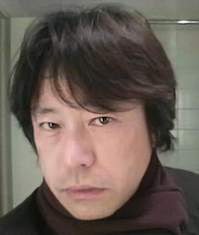 |
To the top
Rudolf Kruse
TITILE: Decomposable Graphical Models: On Learning, Fusion and Revision
Decomposable Graphical Models are of high relevance for complex industrial applications. The Markov network approach is one of their most prominent representatives and an important tool to structure uncertain knowledge about high dimensional domains. But also relational and possibilistic decompositions turn out to be useful to make reasoning in such domains feasible. Compared to conditioning the decomposable model on given evidence, the learning of the structure of the model from data as well as the fusion of several decomposable models is much more complicated. The important belief change operation revision has been almost entirely disregarded in the past, although the problem of inconsistencies is of utmost relevance for real world applications. In this talk these problems are addressed by presenting a successful complex application in an automotive industry.
DATE: May 24th, 2016
Rudolf Kruse
is Professor at the Otto-von-Guericke University of Magdeburg
(Germany), where he is leading the Computational Intelligence Group.
His current research interests include data science and intelligent systems.
His group is successful in various industrial applications in
cooperation with companies such as Volkswagen, Daimler, SAP, and British
Telecom.
He obtained his Ph.D. and his Habilitation in Mathematics from the Technical
University of Braunschweig in 1980 and 1984 respectively. Following a stay
at the Fraunhofer Gesellschaft, he joined the Technical University of
Braunschweig as a professor of computer science in 1986. Since 1996 he is a
full professor at the Department of Computer Science of the
Otto-Von-Guericke University of Magdeburg in Germany.
Rudolf Kruse has coauthored 15 monographs and 25 books as well as more
Than 350 refereed technical papers in various scientific areas.
He is a Fellow of the International Fuzzy Systems Association (IFSA), Fellow of the European
Coordinating Committee for Artificial Intelligence (ECCAI) and Fellow of the
Institute of Electrical and Electronics Engineers (IEEE).
To the top
Decomposable Graphical Models are of high relevance for complex industrial applications. The Markov network approach is one of their most prominent representatives and an important tool to structure uncertain knowledge about high dimensional domains. But also relational and possibilistic decompositions turn out to be useful to make reasoning in such domains feasible. Compared to conditioning the decomposable model on given evidence, the learning of the structure of the model from data as well as the fusion of several decomposable models is much more complicated. The important belief change operation revision has been almost entirely disregarded in the past, although the problem of inconsistencies is of utmost relevance for real world applications. In this talk these problems are addressed by presenting a successful complex application in an automotive industry.
DATE: May 24th, 2016
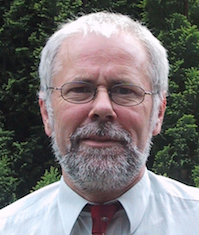 |
To the top
Bernadette BOUCHON-MEUNIER
TITILE: Fuzzy and cognitive approaches of similarities
Fuzzy logic provides interesting tools for data mining and decision making, mainly because of its ability to represent imperfect information, for instance by means of imprecise categories, measures of resemblance or aggregation methods. This ability is of crucial importance when databases are complex, large, and contain heterogeneous, imprecise, vague, uncertain, incomplete data. We focus our study on the use of similarities which are key concepts for all attempts to construct human-like automated systems or assistants to human task solving since they are very natural in the human process of categorization underlying many natural capabilities such as language understanding, pattern recognition or decision-making. We base our discourse on cognitive approaches of similarities, stemming for instance from Tversky's and Rosch's seminal works, among others. We point out several types of measures of comparison compatible with these cognitive foundations, including measures of similarity and dissimilarity. We show that they can be involved in many steps of the process of data mining, such as clustering, construction of prototypes, fuzzy querying, for instance. We eventually illustrate our discourse by examples of similarities used in real-world problems.
DATE: May 24th, 2016
Bernadette Bouchon-Meunier
is a director of research emeritus at the National Centre for Scientific Research, the former head of the department of Databases and Machine Learning in the Computer Science Laboratory of the University Pierre et Marie Curie-Paris 6 (LIP6). She is the Editor-in-Chief of the International Journal of Uncertainty, Fuzziness and Knowledge-based Systems, the (co)-editor of 25 books, and the (co)-author of five. She has (co-)authored more than 400 papers on approximate and similarity-based reasoning, as well as the application of fuzzy logic and machine learning techniques to decision-making, data mining, risk forecasting, information retrieval, user modelling, sensorial and emotional information processing.
Co-executive director of the IPMU International Conference held every other year since 1986, she also served as the FUZZ-IEEE 2010 and FUZZ-IEEE 2013 Program Chair, the IEEE Symposium Series on Computational Intelligence (SSCI 2011) General Chair and the FUZZ-IEEE 2012 Conference Chair, as well as the Honorary chair of IEEE SSCI 2013 and IEEE CIVEMSA 2013.
She is currently the IEEE Computational Intelligence Society Vice-President for Conferences, the IEEE France Section Vice-President for Chapters and the IEEE France Section Computational Intelligence chapter chair. She is an IEEE fellow and an International Fuzzy Systems Association fellow. She received the IEEE Computational Intelligence Society Meritorious Service Award in 2012.
To the top
Fuzzy logic provides interesting tools for data mining and decision making, mainly because of its ability to represent imperfect information, for instance by means of imprecise categories, measures of resemblance or aggregation methods. This ability is of crucial importance when databases are complex, large, and contain heterogeneous, imprecise, vague, uncertain, incomplete data. We focus our study on the use of similarities which are key concepts for all attempts to construct human-like automated systems or assistants to human task solving since they are very natural in the human process of categorization underlying many natural capabilities such as language understanding, pattern recognition or decision-making. We base our discourse on cognitive approaches of similarities, stemming for instance from Tversky's and Rosch's seminal works, among others. We point out several types of measures of comparison compatible with these cognitive foundations, including measures of similarity and dissimilarity. We show that they can be involved in many steps of the process of data mining, such as clustering, construction of prototypes, fuzzy querying, for instance. We eventually illustrate our discourse by examples of similarities used in real-world problems.
DATE: May 24th, 2016
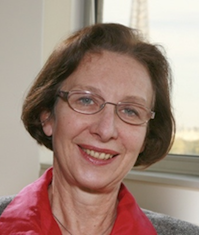 |
To the top
Jim Keller
TITLE: Recognition Technology: Lotfi’s look to the future from the late 1990s
In 1998, Lotfi Zadeh coined the term Recognition Technology, saying that it refers to current or future systems that have the potential to provide a "quantum jump in the capabilities of today’s recognition systems". Recognition Technology will include systems that incorporate three advances: new sensors, novel signal processing and soft computing. That vision has come to pass. I will discuss these three aspects of recognition technology through two quite different case studies that I am involved in: landmine detection and eldercare technology. They are both recognition systems. The former has a goal of detecting objects, explosive hazards, to help save lives while the latter focuses on recognizing human activities to allow older adults to live independently with a higher quality of life. While the sensors applied to these problems are dissimilar, they share many of the signal processing and pattern recognition approaches.
DATE: May 24th, 2016
James M. Keller
received the Ph.D. in Mathematics in 1978. He holds the University of Missouri Curators’ Professorship in the Electrical and Computer Engineering and Computer Science Departments on the Columbia campus. He is also the R. L. Tatum Professor in the College of Engineering. His research interests center on computational intelligence: fuzzy set theory and fuzzy logic, neural networks, and evolutionary computation with a focus on problems in computer vision, pattern recognition, and information fusion including bioinformatics, spatial reasoning in robotics, geospatial intelligence, sensor and information analysis in technology for eldercare, and landmine detection. His industrial and government funding sources include the Electronics and Space Corporation, Union Electric, Geo-Centers, National Science Foundation, the Administration on Aging, The National Institutes of Health, NASA/JSC, the Air Force Office of Scientific Research, the Army Research Office, the Office of Naval Research, the National Geospatial Intelligence Agency, the Leonard Wood Institute, and the Army Night Vision and Electronic Sensors Directorate. Professor Keller has coauthored over 400 technical publications.
Jim is a Life Fellow of the Institute of Electrical and Electronics Engineers (IEEE) and the International Fuzzy Systems Association (IFSA), and a past President of the North American Fuzzy Information Processing Society (NAFIPS). He received the 2007 Fuzzy Systems Pioneer Award and the 2010 Meritorious Service Award from the IEEE Computational Intelligence Society. He finished a full six year term as Editor-in-Chief of the IEEE Transactions on Fuzzy Systems, followed by being the Vice President for Publications of the IEEE Computational Intelligence Society from 2005-2008, and has been an elected CIS Adcom member. He is the IEEE TAB Transactions Chair and a member of the IEEE Publication Review and Advisory Committee. Among many conference duties over the years, Jim was the general chair of the 1991 NAFIPS Workshop and the 2003 IEEE International Conference on Fuzzy Systems.
To the top
TITLE: From Fuzzy Sets to Spatial Cognition
Perception and cognition are resource-limited processes. They generate coarse information about environments that can be analyzed and described at arbitrary levels of resolution and abstraction. Fuzzy set theory and possibility theory provide a conceptual framework to characterize the relation between coarse information and high-precision ‘ground truth’ in environments and in mental states. This relation – a mapping between coarse and fine entities – can be used in two ways: to infer high-precision information from coarse descriptions or to generate coarse descriptions from precise data. The mappings are particularly useful for interfacing high-resolution technical systems with human-friendly low-resolution systems such as natural language. In the interaction between cognitive agents such as humans and robots, we are confronted with a third mapping: the mapping between two coarse systems that do not have access to a common high-resolution ground truth. From a theoretical perspective, such a coarse-to-coarse mapping can be viewed as a composition of a (fictitious) coarse-to-fine mapping composed with a fine-to-coarse mapping. However, the composition does not yield a useful model for the actual mechanisms that enable cognitive agents to successfully interact. In my talk I will describe how fuzzy sets and possibility theory serve as a framework for concepts in spatial cognition that permit natural interaction between cognitive agents in spatial environments.
DATE: May 24th, 2016
Christian Freksa is Professor of Cognitive Systems at the Faculty of Mathematics and Informatics at the University of Bremen, Germany. He directs the Bremen Spatial Cognition Center. His research concerns representation and reasoning with incomplete, imprecise, lean, coarse, approximate, fuzzy, and conflicting knowledge about physical environments. Particular emphasis is on qualitative spatial and temporal reasoning. Freksa received a PhD in Artificial Intelligence from UC Berkeley. He carried out research at the Max Planck Institute and at the Technical University of Munich, at the International Computer Science Institute in Berkeley, and at the University of Hamburg. From 1996 to 2014 he directed national research initiatives on Spatial Cognition supported by the German Research Foundation (DFG). Freksa is a Fellow of the European AI society ECCAI.
To the top
In 1998, Lotfi Zadeh coined the term Recognition Technology, saying that it refers to current or future systems that have the potential to provide a "quantum jump in the capabilities of today’s recognition systems". Recognition Technology will include systems that incorporate three advances: new sensors, novel signal processing and soft computing. That vision has come to pass. I will discuss these three aspects of recognition technology through two quite different case studies that I am involved in: landmine detection and eldercare technology. They are both recognition systems. The former has a goal of detecting objects, explosive hazards, to help save lives while the latter focuses on recognizing human activities to allow older adults to live independently with a higher quality of life. While the sensors applied to these problems are dissimilar, they share many of the signal processing and pattern recognition approaches.
DATE: May 24th, 2016
 |
To the top
Christian Freksa
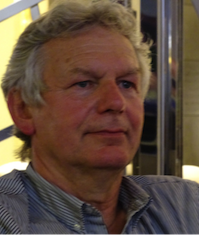 |
Perception and cognition are resource-limited processes. They generate coarse information about environments that can be analyzed and described at arbitrary levels of resolution and abstraction. Fuzzy set theory and possibility theory provide a conceptual framework to characterize the relation between coarse information and high-precision ‘ground truth’ in environments and in mental states. This relation – a mapping between coarse and fine entities – can be used in two ways: to infer high-precision information from coarse descriptions or to generate coarse descriptions from precise data. The mappings are particularly useful for interfacing high-resolution technical systems with human-friendly low-resolution systems such as natural language. In the interaction between cognitive agents such as humans and robots, we are confronted with a third mapping: the mapping between two coarse systems that do not have access to a common high-resolution ground truth. From a theoretical perspective, such a coarse-to-coarse mapping can be viewed as a composition of a (fictitious) coarse-to-fine mapping composed with a fine-to-coarse mapping. However, the composition does not yield a useful model for the actual mechanisms that enable cognitive agents to successfully interact. In my talk I will describe how fuzzy sets and possibility theory serve as a framework for concepts in spatial cognition that permit natural interaction between cognitive agents in spatial environments.
DATE: May 24th, 2016
Christian Freksa is Professor of Cognitive Systems at the Faculty of Mathematics and Informatics at the University of Bremen, Germany. He directs the Bremen Spatial Cognition Center. His research concerns representation and reasoning with incomplete, imprecise, lean, coarse, approximate, fuzzy, and conflicting knowledge about physical environments. Particular emphasis is on qualitative spatial and temporal reasoning. Freksa received a PhD in Artificial Intelligence from UC Berkeley. He carried out research at the Max Planck Institute and at the Technical University of Munich, at the International Computer Science Institute in Berkeley, and at the University of Hamburg. From 1996 to 2014 he directed national research initiatives on Spatial Cognition supported by the German Research Foundation (DFG). Freksa is a Fellow of the European AI society ECCAI.
To the top
Janusz Kacprzyk
TITLE: Fuzzy preferences and majority in multiagent decision making: from status quo to innovative decisions
Our main concern is the process of multiagent decision making under fuzzy preferences and fuzzy majority. We have a set of options and a set of agents, human beings or not, who present their testimonies assumed to be fuzzy preference relations. We look for an option (or a set of options) which is best acceptable by the group of agents, i.e. by a fuzzy majority (e.g. most) of them. We deal with relatively small sets of options and agents. The fuzzy majority, introduced by Kacprzyk (1985), is represented by a fuzzy linguistic quantifier like “most”, “almost all”, “much more than a half”, etc. dealt with by, e.g., Zadeh’s calculus of linguistically quantified propositions or Yager’s OWA operators. Then, from the fuzzy preferences of the individual agents we determine some solution concept like Kacprzyk’s fuzzy Q-core, i.e. a fuzzy set of options which are not defeated in pairwise comparisons by the required fuzzy majority Q (e.g. most) of agents. This solution concept can then be extended by taking into account the importance of agents and relevance of options. First, we follow the usual path in this area, i.e. we claim that a “better” group decision can be found if agents are at consensus. We perform a consensus reaching session, find consensual fuzzy preferences, and determine a fuzzy set of agent whose fuzzy preferences are close to the consensual ones; this implies what we call status quo solutions. Then, taking another point if departure, related to some claims of knowledge and innovation management, we find another fuzzy set of agents whose preferences are far from the consensual ones; this implies what we call innovative solutions. We show, as a possible way to obtain those status quo and innovative solutions, new augmented fuzzy Q-cores for those consensory and dissensory agents, and analyze the solutions obtained from the point of view of their novelty and innovativeness which are measured by using some numerical indexes. We show some example of choosing a regional development policy.
DATE: May 25th, 2016
Janusz Kacprzyk
graduated from Warsaw University of Technology, Poland, with M.Sc. in automatic control and computer science, obtained in 1977 Ph.D. in systems analysis and in 1991 D.Sc. in computer science. He is Professor of Computer Science at the Systems Research Institute, Polish Academy of Sciences, and at WIT – Warsaw School of Information Technology, and Professor of Automatic Control at PIAP – Industrial Institute of Automation and Measurements, and Department of Electrical and Computer Engineering, Cracow University of Technology. He is Honorary Foreign Professor at the Department of Mathematics, Yli Normal University, Xinjiang, China, and Visiting Scientist at RIKEN Brain Research Institute, Tokyo, Japan. He is Full Member of the Polish Academy of Sciences, Member of Academia Eueopaea (Informatics), Member of European Academy of Sciences and Arts (Technical Sciences), Foreign Member of the Spanish Royal Academy of Economic and Financial Sciences (RACEF), and Foreign Member of the Bulgarian Academy of Sciences. He is Fellow of IEEE, IFSA, ECCAI and MICAI.
He has been a frequent visiting professor in the USA, Italy, UK, Mexico, China. His main research interests include the use of modern computation computational and artificial intelligence tools, notably fuzzy logic, in decisions, optimization, control, data analysis and data mining, with applications in databases, ICT, mobile robotics, etc.
He authored 5 books, (co)edited more than 80 volumes, (co)authored ca. 500 papers. His bibliographic data are: due to Google Scholar - citations: 19765; h-index: 64, due to Scopus: citations: 4606; h-index: 32; due to WoS: citation: 3821, h-index: 27. He is the editor in chief of 6 book series at Springer, and of 2 journals, and is on the editorial boards of ca. 40 journals. He is a member of the Adcom of IEEE CIS, and was a Distinguished Lecturer of IEEE CIS.
He received many awards: 2006 IEEE CIS Pioneer Award in Fuzzy Systems, 2006 Sixth Kaufmann Prize and Gold Medal for pioneering works on soft computing in economics and management, 2007 Pioneer Award of the Silicon Valley Section of IEEE CIS for contribution in granular computing and computing in words, 2010 Award of the Polish Neural Network Society for exceptional contributions to the Polish computational intelligence community, IFSA 2013 Award for his lifetime achievements in fuzzy systems and service to the fuzzy community, and the 2014 World Automation Congress Lifetime Award for contributions in soft computing. He is President of the Polish Operational and Systems Research Society and Past President of International Fuzzy Systems Association.
To the top
Our main concern is the process of multiagent decision making under fuzzy preferences and fuzzy majority. We have a set of options and a set of agents, human beings or not, who present their testimonies assumed to be fuzzy preference relations. We look for an option (or a set of options) which is best acceptable by the group of agents, i.e. by a fuzzy majority (e.g. most) of them. We deal with relatively small sets of options and agents. The fuzzy majority, introduced by Kacprzyk (1985), is represented by a fuzzy linguistic quantifier like “most”, “almost all”, “much more than a half”, etc. dealt with by, e.g., Zadeh’s calculus of linguistically quantified propositions or Yager’s OWA operators. Then, from the fuzzy preferences of the individual agents we determine some solution concept like Kacprzyk’s fuzzy Q-core, i.e. a fuzzy set of options which are not defeated in pairwise comparisons by the required fuzzy majority Q (e.g. most) of agents. This solution concept can then be extended by taking into account the importance of agents and relevance of options. First, we follow the usual path in this area, i.e. we claim that a “better” group decision can be found if agents are at consensus. We perform a consensus reaching session, find consensual fuzzy preferences, and determine a fuzzy set of agent whose fuzzy preferences are close to the consensual ones; this implies what we call status quo solutions. Then, taking another point if departure, related to some claims of knowledge and innovation management, we find another fuzzy set of agents whose preferences are far from the consensual ones; this implies what we call innovative solutions. We show, as a possible way to obtain those status quo and innovative solutions, new augmented fuzzy Q-cores for those consensory and dissensory agents, and analyze the solutions obtained from the point of view of their novelty and innovativeness which are measured by using some numerical indexes. We show some example of choosing a regional development policy.
DATE: May 25th, 2016
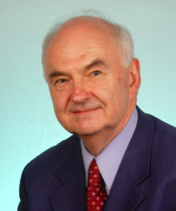 |
To the top
Vladik Kreinovich
TITLE: Fuzzy Logic Can Justify and Improve Semi-Heuristic Data and Image
Processing Techniques: Main Idea and Case Studies
Fuzzy logic techniques were originally designed to translate expert knowledge -- which is often formulated by using imprecise ("fuzzy") from natural language (like "small") -- into precise computer-understandable models and control strategies. Such a translation is still the main use of fuzzy techniques. For example, we want to control a complex plant for which no good control technique is known, but for which there are experts how can control this plant reasonably well. So, we elicit rules from the experts, and then we use fuzzy techniques to translate these rules into a control strategy. Lately, it turned out that fuzzy techniques can help in another class of applied problems: namely, in situations when there are semi-heuristic techniques for solving the corresponding problems, i.e., techniques for which there is no convincing theoretical justification. Because of the lack of a theoretical justification, users are reluctant to use these techniques, since their previous empirical success does not guarantee that these techniques will work well on new problems. Also, these techniques are usually not perfect, and without an underlying theory, it is not clear how to improve their performance. For example, linear models can be viewed as first approximation to Taylor series, so a natural next approximation is to use quadratic models. However, e.g., for l^p-models, when they do not work well, it is not immediately clear what is a reasonable next approximation. In this talk, we show that in many such situations, the desired theoretical justification can be obtained if, in addition to known (crisp) requirements on the desired solution, we also take into account requirements formulated by experts in natural-language terms. Naturally, we use fuzzy techniques to translate these imprecise requirements into precise terms. To make the resulting justification convincing, we need to make sure that this justification works not only for one specific choice of fuzzy techniques (i.e., membership function, "and"- and "or"-operations, etc.), but for all combinations of such techniques which are consistent with the corresponding practical problem. As examples, we provide the detailed justification of: 1) sparsity techniques in data and image processing -- a very successful hot-topic technique whose success is often largely a mystery; 2) l^p-regularization techniques in solving inverse problems -- an empirically successful alternative to Tikhonov regularization appropriate for situations when the desired signal or image is not smooth; and 3) non-linear empirical models of soil mechanics used in road construction. Several other applications will be mentioned.
DATE: May 25th, 2016
Vladik Kreinovich
received his MS in Mathematics and Computer
Science from St. Petersburg University, Russia, in 1974, and PhD
from the Institute of Mathematics, Soviet Academy of Sciences,
Novosibirsk, in 1979. From 1975 to 1980, he worked with the Soviet
Academy of Sciences; during this time, he worked with the Special
Astrophysical Observatory (focusing on the representation and
processing of uncertainty in radioastronomy). For most of the
1980s, he worked on error estimation and intelligent information
processing for the National Institute for Electrical Measuring
Instruments, Russia. In 1989, he was a visiting scholar at Stanford
University. Since 1990, he has worked in the Department of Computer
Science at the University of Texas at El Paso. In addition, he has
served as an invited professor in Paris (University of Paris VI),
France; Hong Kong; St. Petersburg, Russia; and Brazil.
His main interests are the representation and processing of
uncertainty, especially interval computations and intelligent
control. He has published six books, eleven edited books, and
more than 1,100 papers. Vladik is a member of the editorial board
of the international journal "Reliable Computing" (formerly
"Interval Computations") and several other journals. In addition,
he is the co-maintainer of the international Web site on interval
computations
http://www.cs.utep.edu/interval-comp .
Vladik is Vice President for Publications of IEEE Systems, Man,
and Cybernetics Society; he served as President of the North
American Fuzzy Information Processing Society 2012-14; is a
foreign member of the Russian Academy of Metrological Sciences;
was the recipient of the 2003 El Paso Energy Foundation Faculty
Achievement Award for Research awarded by the University of Texas
at El Paso; and was a co-recipient of the 2005 Star Award from the
University of Texas System.
To the top
Fuzzy logic techniques were originally designed to translate expert knowledge -- which is often formulated by using imprecise ("fuzzy") from natural language (like "small") -- into precise computer-understandable models and control strategies. Such a translation is still the main use of fuzzy techniques. For example, we want to control a complex plant for which no good control technique is known, but for which there are experts how can control this plant reasonably well. So, we elicit rules from the experts, and then we use fuzzy techniques to translate these rules into a control strategy. Lately, it turned out that fuzzy techniques can help in another class of applied problems: namely, in situations when there are semi-heuristic techniques for solving the corresponding problems, i.e., techniques for which there is no convincing theoretical justification. Because of the lack of a theoretical justification, users are reluctant to use these techniques, since their previous empirical success does not guarantee that these techniques will work well on new problems. Also, these techniques are usually not perfect, and without an underlying theory, it is not clear how to improve their performance. For example, linear models can be viewed as first approximation to Taylor series, so a natural next approximation is to use quadratic models. However, e.g., for l^p-models, when they do not work well, it is not immediately clear what is a reasonable next approximation. In this talk, we show that in many such situations, the desired theoretical justification can be obtained if, in addition to known (crisp) requirements on the desired solution, we also take into account requirements formulated by experts in natural-language terms. Naturally, we use fuzzy techniques to translate these imprecise requirements into precise terms. To make the resulting justification convincing, we need to make sure that this justification works not only for one specific choice of fuzzy techniques (i.e., membership function, "and"- and "or"-operations, etc.), but for all combinations of such techniques which are consistent with the corresponding practical problem. As examples, we provide the detailed justification of: 1) sparsity techniques in data and image processing -- a very successful hot-topic technique whose success is often largely a mystery; 2) l^p-regularization techniques in solving inverse problems -- an empirically successful alternative to Tikhonov regularization appropriate for situations when the desired signal or image is not smooth; and 3) non-linear empirical models of soil mechanics used in road construction. Several other applications will be mentioned.
DATE: May 25th, 2016
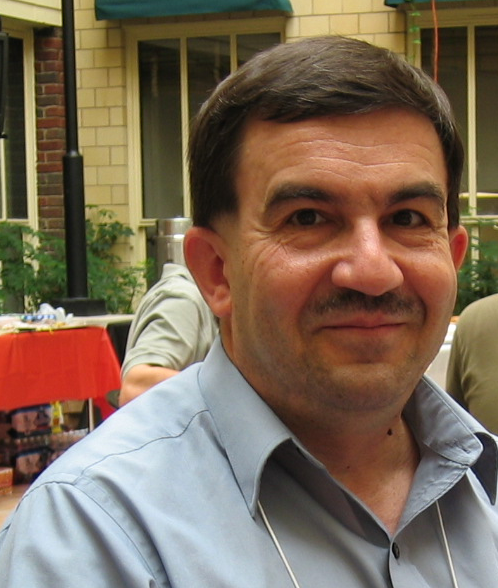 |
To the top
Ildar Batyrshin
TITLE: Fuzzy Logic and Non-Statistical Association Measures
The idea of measuring of positive and negative associations (or correlations) between data is very popular in data analysis. The Pearson’s correlation coefficient as a measure of association is used in many approaches to data analysis, machine learning, signal processing etc. This correlation coefficient serves as a prototype for construction of association measures in different application areas. This talk will discuss the general methods of construction of association measures as functions satisfying the properties of Pearson’s correlation coefficient. These methods use the technique developed in the theory of fuzzy logic and aggregation functions. Examples of association and correlation measures constructed by these methods on different domains are discussed. The measures of associations and correlations on [0,1], on the set of fuzzy set, on the set of time series etc. are considered.
DATE: May 25th, 2016
Ildar Batyrshin
graduated from the Moscow Physical-Technical Institute, Faculty of Control and Applied Mathematics in 1975. He received his PhD from the Moscow Power Engineering Institute in 1983 and Dr. Sc. (habilitation) from the Higher Attestation Committee of Russian Federation in 1996. He joined the Department of Informatics and Applied Mathematics of Kazan State Technological University, Kazan, Russia in 1975, and served as the Department Head in 1997-2003. Since 1999, he was also a leading researcher of the Institute of Problems of Informatics of Academy of Sciences of the Republic of Tatarstan, Russia. He joined the Research Program of Applied Mathematics and Computations of Mexican Petroleum Institute in 2003 as a leading researcher. Since 2014 he is with the Center for Computing Research of Mexican National Polytechnic Institute (CIC IPN) as a Titular Professor C.
He is a Past President of Russian Association for Fuzzy Systems and Soft Computing (RAFSSoftCom), a member of the Council of Mexican Society for Artificial Intelligence, a member of the Board of Directors of NAFIPS, Senior Member of IEEE Computational Intelligence Society, a member of editorial boards of several scientific journals.
His awards: Research Level 2 of the National System of Researchers of Mexico; Best Research Prize of Mexican Petroleum Institute in 2007 for the Development of Fuzzy Expert System in Water Production Diagnosis; Honorary Professor of Obudu University, Budapest, Hungary; Honorary Researcher of the Republic of Tatarstan, Russia; State Research Fellowship of the Presidium of Russian Academy of Sciences for Distinguished Researchers (1997-2003).
He served as a Co-Chair of 9 International Conferences on Soft Computing, Artificial Intelligence and Computational Intelligence. He is a co-author and co-editor of 19 books and special volumes of journals. He is an author of more than 200 scientific publications.
To the top
TITLE: Explorations in Ordinal Preference Theory with the Savage’s Omelet Problem
There are two preference models used in preference theory for multi-criteria decision making: cardinal models with addition-multiplication on real numbers and ordinal models with max-min operations on ordinal numbers. In this study, we explore ordinal preference models based on various S-integrals which are counterparts of various Choquet integrals used as cardinal preference models. We examine a family of S-integrals such as S-integrals, Symmetric S-integrals, Cumulative Prospect Theory S-integrals, Bi-Capacity S-integrals and Level-Dependent S-integrals through the Savage’s Omelet Problem which has been often used as a simple illustrative example in multi-criteria decision making. In this problem, however, we find many preference orders of acts depending on the consequents of acts. In the examinations, we find that there exist some preference orders which cannot be modeled even by Bi-Capacity S-integrals and Level-Dependent S-integrals. In order to completely solve the problem, we successfully apply a novel modeling scheme called Hierarchical S-integrals. Finally, reviewing the history of cardinal preference models, we introduce an essential concept of ‘admissibility’ into preference theory. With this concept, we can clearly state the primary objective of preference theory. Considering it, we pose a hypothesis that any admissible preference orders could be modeled with our Hierarchical S-integrals in the case of ordinal preference or Hierarchical Choquet integrals in the case of cardinal preference.
DATE: May 25th, 2016
Michio Sugeno was born in Yokohama; Japan in 1940. After graduating from the Department of Physics, the University of Tokyo, he worked at a company for three years. Then, he served the Tokyo Institute of Technology as Research Associate, Associate Professor and Professor from 1965 to 2000. After retiring from the Tokyo Institute of Technology, he worked as Laboratory Head at the Brain Science Institute, RIKEN from 2000 to 2005, as Distinguished Visiting Professor at Doshisha University from 2005 to 2010 and then as Emeritus Researcher at the European Centre for Soft Computing, Spain from 2010 to 2015. He is Emeritus Professor at the Tokyo Institute of Technology. He was President of the Japan Society for Fuzzy Theory and Systems from 1991 to 1993, and also President of the International Fuzzy Systems Association from 1997 to 1999. He is the first recipient of the IEEE Pioneer Award in Fuzzy Systems with Zadeh in 2000. He also received the 2010 IEEE Frank Rosenblatt Award and Kampét de Feriét Award in 2012. His research interests are Choquet calculus, fuzzy measure theory, nonlinear control, preference theory, applications of Systemic Functional Linguistics and language functions of the brain.
To the top
The idea of measuring of positive and negative associations (or correlations) between data is very popular in data analysis. The Pearson’s correlation coefficient as a measure of association is used in many approaches to data analysis, machine learning, signal processing etc. This correlation coefficient serves as a prototype for construction of association measures in different application areas. This talk will discuss the general methods of construction of association measures as functions satisfying the properties of Pearson’s correlation coefficient. These methods use the technique developed in the theory of fuzzy logic and aggregation functions. Examples of association and correlation measures constructed by these methods on different domains are discussed. The measures of associations and correlations on [0,1], on the set of fuzzy set, on the set of time series etc. are considered.
DATE: May 25th, 2016
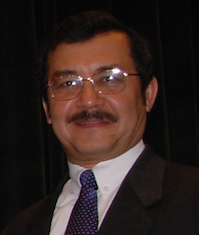 |
To the top
Michio Sugeno
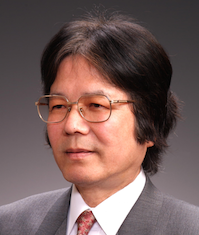 |
There are two preference models used in preference theory for multi-criteria decision making: cardinal models with addition-multiplication on real numbers and ordinal models with max-min operations on ordinal numbers. In this study, we explore ordinal preference models based on various S-integrals which are counterparts of various Choquet integrals used as cardinal preference models. We examine a family of S-integrals such as S-integrals, Symmetric S-integrals, Cumulative Prospect Theory S-integrals, Bi-Capacity S-integrals and Level-Dependent S-integrals through the Savage’s Omelet Problem which has been often used as a simple illustrative example in multi-criteria decision making. In this problem, however, we find many preference orders of acts depending on the consequents of acts. In the examinations, we find that there exist some preference orders which cannot be modeled even by Bi-Capacity S-integrals and Level-Dependent S-integrals. In order to completely solve the problem, we successfully apply a novel modeling scheme called Hierarchical S-integrals. Finally, reviewing the history of cardinal preference models, we introduce an essential concept of ‘admissibility’ into preference theory. With this concept, we can clearly state the primary objective of preference theory. Considering it, we pose a hypothesis that any admissible preference orders could be modeled with our Hierarchical S-integrals in the case of ordinal preference or Hierarchical Choquet integrals in the case of cardinal preference.
DATE: May 25th, 2016
Michio Sugeno was born in Yokohama; Japan in 1940. After graduating from the Department of Physics, the University of Tokyo, he worked at a company for three years. Then, he served the Tokyo Institute of Technology as Research Associate, Associate Professor and Professor from 1965 to 2000. After retiring from the Tokyo Institute of Technology, he worked as Laboratory Head at the Brain Science Institute, RIKEN from 2000 to 2005, as Distinguished Visiting Professor at Doshisha University from 2005 to 2010 and then as Emeritus Researcher at the European Centre for Soft Computing, Spain from 2010 to 2015. He is Emeritus Professor at the Tokyo Institute of Technology. He was President of the Japan Society for Fuzzy Theory and Systems from 1991 to 1993, and also President of the International Fuzzy Systems Association from 1997 to 1999. He is the first recipient of the IEEE Pioneer Award in Fuzzy Systems with Zadeh in 2000. He also received the 2010 IEEE Frank Rosenblatt Award and Kampét de Feriét Award in 2012. His research interests are Choquet calculus, fuzzy measure theory, nonlinear control, preference theory, applications of Systemic Functional Linguistics and language functions of the brain.
To the top
